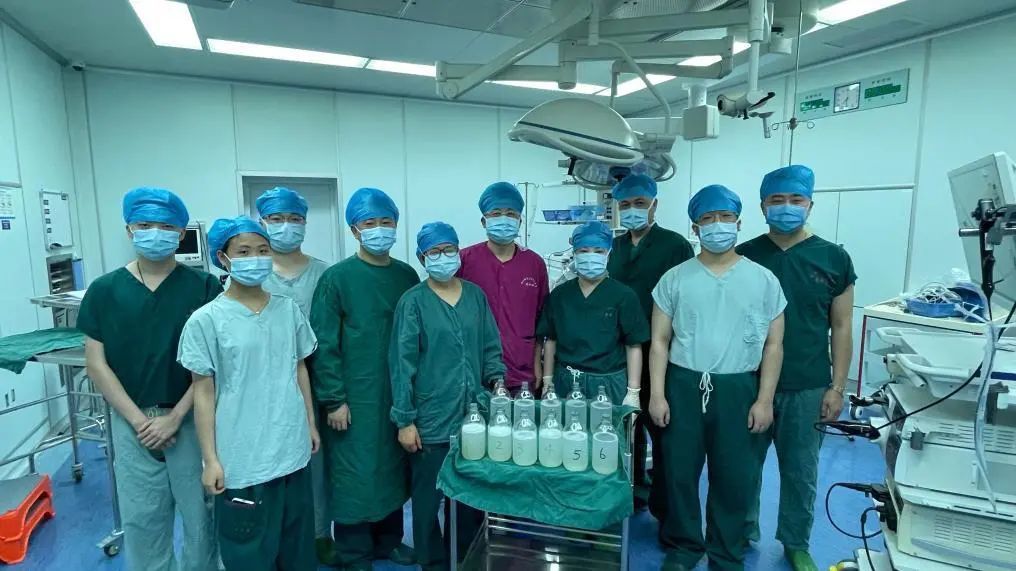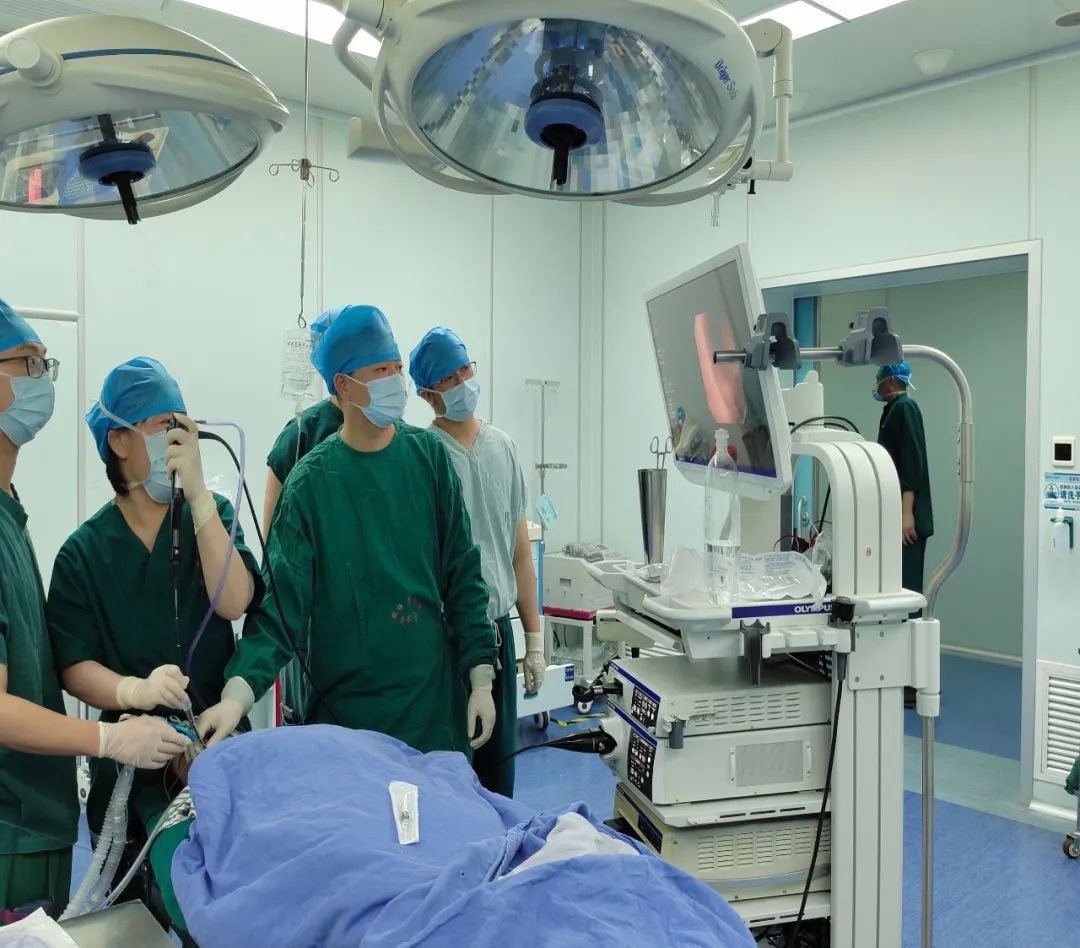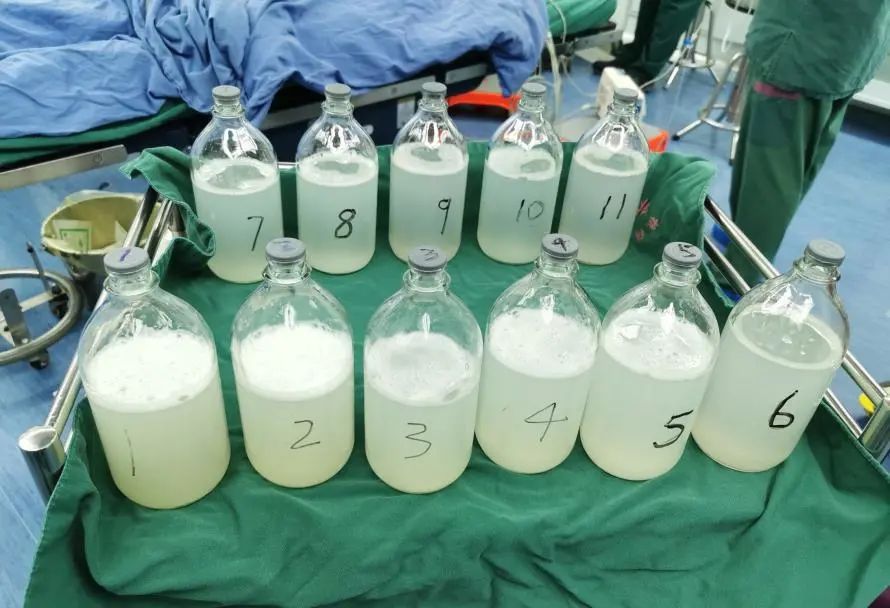Source: Hangzhou Normal University Affiliated Hospital

Recently, the Affiliated Hospital of Hangzhou Normal University, Respiratory and Risk The Department of Critical Care Medicine successfully performed whole lung lavage on a patient with rare pulmonary alveolar proteinosis. It took 4 hours to infuse a total of 11,000ml of normal saline, and recovered 10,600ml of milky white “milk”-like precipitated liquid. At present, the patient’s condition has improved significantly and is still in the ward Rehabilitation under observation.
Ms. Li (pseudonym), 43 years old, developed symptoms of shortness of breath after an activity six months ago. At first, she did not pay attention to it and thought she was overworked. It got worse every day, which seriously affected her quality of life. She was also very worried, so she was introduced by an acquaintance to the specialist outpatient clinic of the Department of Respiratory and Critical Care Medicine of the Affiliated Hospital of Hangzhou Normal University.
The director of the Department of Respiratory and Critical Care Medicine, Chief Physician Lv Qun, conducted a comprehensive and detailed examination and physical examination for Ms. Li, and then suggested a complete chest CT examination according to her condition. The results were surprising , Ms. Li’s chest CT showed diffuse interstitial changes in both lungs of the patient with a map-like distribution. The experienced Lv Qun considered the possibility of Ms. Li’s rare alveolar proteinosis. When the disease is severe, respiratory failure can occur and endanger the patient’s life. Therefore, Ms. Li was admitted to the hospital for further diagnosis and treatment, requiring further examination in hospital.
After admission, the respiratory and critical care treatment team arranged a bronchoscopy for Ms. Li immediately. The pathological findings of the lavage fluid showed homogeneous red staining without structural substances, PAS staining (+), and the diagnosis was Alveolar proteinosis. At present, the best treatment for pulmonary alveolar proteinosis is recognized as “total alveolar lavage under general anesthesia”. However, whole lung lavage is a high-risk operation that needs to be performed under general anesthesia, which is extremely challenging for both the operating physician and the anesthesiologist.

In order to ensure that the lavage operation is safe, the respiratory and critical care treatment team and the anesthesia team actively discussed the case and formulated a Rigorous and thorough surgical plan. On the day of the operation, the medical staff in the operating room cooperated fully and tacitly, and finally successfully completed the first double-lumen tracheal intubation whole lung large-volume lavage in our hospital.

The whole operation went smoothly, which lasted nearly 4 hours. A total of 11000ml of normal saline was poured into it, and the milky white “milk”-like precipitate was recovered The liquid was 10600ml. After the operation, Ms. Yang’s shortness of breath improved significantly. The patient is still under observation in the ward.
According to Lu Qun, pulmonary alveolar proteinosis is very rare clinically, and it is easy to be missed and misdiagnosed. There are usually unexplained factors that lead to the deposition of a large amount of phospholipid protein-like substances in the alveoli of patients. The onset is often insidious, and the typical symptoms are shortness of breath after activity, which aggravates with the development of the disease. Dyspnea and cyanosis also become more serious. If not treated in time, it will not only affect the quality of life, but may also lead to respiratory failure and life-threatening in severe cases.
The treatment of this disease mainly focuses on how to remove protein-like substances deposited in the alveoli. At present, total alveolar lavage under general anesthesia is generally recommended at home and abroad. Functions are improved. The whole lung lavage of alveolar proteinosis carried out in our hospital also marks a new step in the interventional treatment of rare diseases of the respiratory system in our hospital.
Lu Qun said that although the clinical manifestations of pulmonary alveolar proteinosis are not typical, cough and expectoration, chest tightness, shortness of breath, chest pain and hemoptysis are common symptoms of most respiratory diseases. To pay attention, should go to the hospital as soon as possible to avoid the delay and progress of the disease.